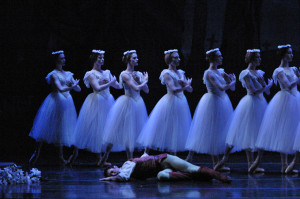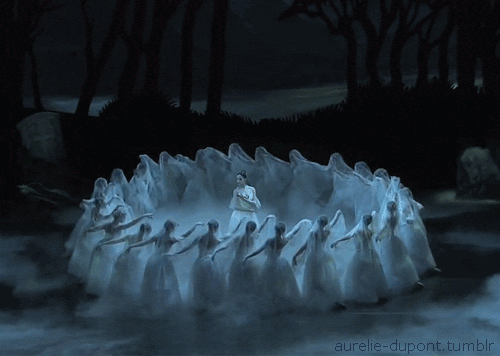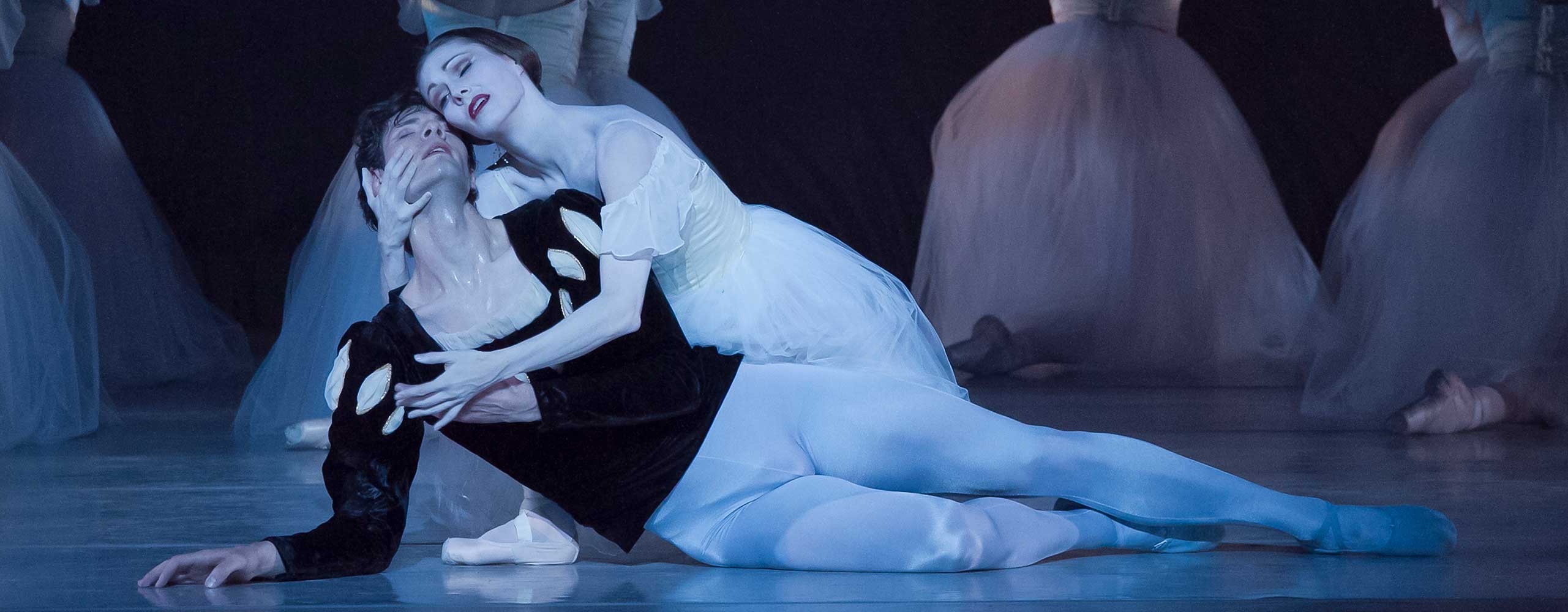- The “Wilis” in Giselle are ghostly spirits of dead girls jilted on their wedding day. They force men to dance to their deaths – a real “case of the wilis!” Some have traced “Wili” to a Slavic witch spirit associated with water; the name is a cognate of the Scandinavian “Valkyrie” of Opera fame.
 Kansas City Ballet “Wili” Dancers in 2003
Kansas City Ballet “Wili” Dancers in 2003 - Giselle’s “mad scene” when she discovers Albrecht’s duplicity (and his fiancé) at the end of Act 1 is one of the most famous and challenging in all the repertoire for its demands on dance technique and emotional expression.
 Marianela Nuñez During the ‘Mad Scene’ – The Royal Ballet
Marianela Nuñez During the ‘Mad Scene’ – The Royal Ballet - When Giselle was written people thought of Germany when they heard a waltz, thus Giselle’s entrance to a waltz announces the story’s locale.
 Andre Rieu live at Schönbrunn Vienna 2006 – Rosen aus dem Süden
Andre Rieu live at Schönbrunn Vienna 2006 – Rosen aus dem Süden - The original Giselle in 1841 contained 54 minutes of mime to 60 minutes of dance, suggesting accomplished dancers also had to be skilled actors. Over the years dance has taken a more significant role in telling the story.
- Giselle composer Adolphe Adam’s Christmas carol “Cantique de Noël,” translated to English as “O Holy Night,” is said to have been the first music broadcast on radio.
- Devon Carney’s version of Giselle is based on Marius Petipa’s classic version of 1884 (which followed the original by Jules Perrot and Jean Coralli from 1841). Marius’ brother Lucien danced the role of Albrecht in the 1841 premiere.
 Marius Petipa (photo from Wikipedia.org)
Marius Petipa (photo from Wikipedia.org) - The pas de deux in Act I was not originally in Giselle. The story goes that the banker backing the original production wanted to see his girlfriend, Nathalie Fitzjames, given something special to do on stage.
 Natalie Fitzjames (photo from digitalcollections.nypl.org)
Natalie Fitzjames (photo from digitalcollections.nypl.org) - The name “Giselle” is derived from the Germanic word “gisil,” meaning “hostage” or “pledge.” This name may have originally been a descriptive nickname for a child given as a pledge to a foreign court.
- In the 1800’s Giselle was advertised as a “ballet-fantastique,” meaning the ballet involved a dark and powerful spiritual world and/or supernatural or fantastical elements. By contrast, The Sleeping Beauty was considered a “ballet-faerie,” with its more benign fairies.
 “Sleeping Beauty” – www.connecticutballet.com
“Sleeping Beauty” – www.connecticutballet.com “Giselle” – aurelie-dupont.tumblr
“Giselle” – aurelie-dupont.tumblr - The character Giselle’s hairstyle – parted in the middle and pulled back tightly over the ears – became an instant hit in 1841 Paris, with salons overwhelmed by demands for the coiffure.
 KCB Dancers Kimberly Cowen and Geoffrey Kropp in 2011
KCB Dancers Kimberly Cowen and Geoffrey Kropp in 2011



